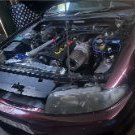Ferrari F1 car vs Skyline
Announcements
-
Similar Content
-
Latest Posts
-
Yeah, that doesn't necessarily mean that it flows. If the exit side pipework is blocked somewhere (in the hose, in the nipple that it returns into the motor/plumbing, etc), but the supply side is not blocked, then when you crack the bleeder you will get flow from the open side. But when you close the bleeder - no flow. And.... therefore no heat. You might have to work a little harder to prove it to yourself. When I bought my engine the entire IACV bleeder was choked with cooling system schmutz. I had to clean it and the pipework out before it would work.
-
"The outer is separated from the inner by the rubber" duh....I know that, I should have figured that out, gheeze. thanks, I'll replace it.
-
Hey Yeah ill be there ! Hussling hard now to get seat time and make car all good see if can get some early track time over east 🤞 Itd be really nice to have some luck 😁
-
The two tyres U have mentioned are the same height as the profile height is a calculated percentage of the width
-
appears to be, I loosened the bleeder on top IACV and coolant came out.
-




![[SKYHI]](http://saufiles.s3.ap-southeast-2.amazonaws.com/monthly_2022_12/DSC00168.thumb.jpg.a90d7ff08652d4dc85ab9b2ff27dade7.jpg)
Recommended Posts
Create an account or sign in to comment
You need to be a member in order to leave a comment
Create an account
Sign up for a new account in our community. It's easy!
Register a new accountSign in
Already have an account? Sign in here.
Sign In Now